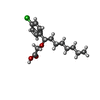Entry Database : PDB / ID : 6ms7Title Peroxisome proliferator-activated receptor gamma ligand binding domain in complex with a novel selective PPAR-gamma modulator VSP-77 PGC1 LXXLL motif Peroxisome proliferator-activated receptor gamma Keywords / / / / / Function / homology Function Domain/homology Component
/ / / / / / / / / / / / / / / / / / / / / / / / / / / / / / / / / / / / / / / / / / / / / / / / / / / / / / / / / / / / / / / / / / / / / / / / / / / / / / / / / / / / / / / / / / / / / / / / / / / / / / / / / / / / / / / / / / / / / / / / / / / / / / / / / / / / / / / / / / / / / / / / / / / Biological species Homo sapiens (human)synthetic construct (others) Method / / Resolution : 1.43 Å Authors Yi, W. / Jiang, H. / Zhou, X.E. / Shi, J. / Zhao, G. / Zhang, X. / Sun, Y. / Suino-Powell, K. / Li, J. / Li, J. ...Yi, W. / Jiang, H. / Zhou, X.E. / Shi, J. / Zhao, G. / Zhang, X. / Sun, Y. / Suino-Powell, K. / Li, J. / Li, J. / Melcher, K. / Xu, H.E. Funding support Organization Grant number Country National Natural Science Foundation of China (NSFC) 81125023, 81502909 and 21877020
Journal : Chem Sci / Year : 2020Title : Identification and structural insight of an effective PPAR gamma modulator with improved therapeutic index for anti-diabetic drug discovery.Authors : Jiang, H. / Zhou, X.E. / Shi, J. / Zhou, Z. / Zhao, G. / Zhang, X. / Sun, Y. / Suino-Powell, K. / Ma, L. / Gao, H. / Yu, X. / Li, J. / Li, J. / Melcher, K. / Xu, H.E. / Yi, W. History Deposition Oct 16, 2018 Deposition site / Processing site Revision 1.0 Oct 23, 2019 Provider / Type Revision 1.1 Jan 8, 2020 Group / Category / Item Revision 1.2 Apr 15, 2020 Group / Category / citation_authorItem _citation.country / _citation.journal_abbrev ... _citation.country / _citation.journal_abbrev / _citation.journal_id_CSD / _citation.journal_id_ISSN / _citation.journal_volume / _citation.page_first / _citation.page_last / _citation.pdbx_database_id_DOI / _citation.pdbx_database_id_PubMed / _citation.title / _citation.year Revision 1.3 Mar 13, 2024 Group / Database references / Category / chem_comp_bond / database_2Item / _database_2.pdbx_database_accession
Show all Show less
 Yorodumi
Yorodumi Open data
Open data Basic information
Basic information Components
Components Keywords
Keywords Function and homology information
Function and homology information Homo sapiens (human)
Homo sapiens (human) X-RAY DIFFRACTION /
X-RAY DIFFRACTION /  SYNCHROTRON / Resolution: 1.43 Å
SYNCHROTRON / Resolution: 1.43 Å  Authors
Authors China, 1items
China, 1items  Citation
Citation Journal: Chem Sci / Year: 2020
Journal: Chem Sci / Year: 2020 Structure visualization
Structure visualization Molmil
Molmil Jmol/JSmol
Jmol/JSmol Downloads & links
Downloads & links Download
Download 6ms7.cif.gz
6ms7.cif.gz PDBx/mmCIF format
PDBx/mmCIF format pdb6ms7.ent.gz
pdb6ms7.ent.gz PDB format
PDB format 6ms7.json.gz
6ms7.json.gz PDBx/mmJSON format
PDBx/mmJSON format Other downloads
Other downloads 6ms7_validation.pdf.gz
6ms7_validation.pdf.gz wwPDB validaton report
wwPDB validaton report 6ms7_full_validation.pdf.gz
6ms7_full_validation.pdf.gz 6ms7_validation.xml.gz
6ms7_validation.xml.gz 6ms7_validation.cif.gz
6ms7_validation.cif.gz https://data.pdbj.org/pub/pdb/validation_reports/ms/6ms7
https://data.pdbj.org/pub/pdb/validation_reports/ms/6ms7 ftp://data.pdbj.org/pub/pdb/validation_reports/ms/6ms7
ftp://data.pdbj.org/pub/pdb/validation_reports/ms/6ms7 Links
Links Assembly
Assembly
 Components
Components Homo sapiens (human) / Gene: PPARG, NR1C3 / Production host:
Homo sapiens (human) / Gene: PPARG, NR1C3 / Production host: 
 X-RAY DIFFRACTION / Number of used crystals: 1
X-RAY DIFFRACTION / Number of used crystals: 1  Sample preparation
Sample preparation SYNCHROTRON / Site:
SYNCHROTRON / Site:  APS
APS  / Beamline: 21-ID-D / Wavelength: 1.0782 Å
/ Beamline: 21-ID-D / Wavelength: 1.0782 Å Processing
Processing Movie
Movie Controller
Controller



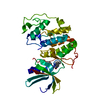
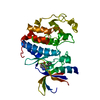
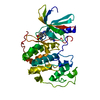
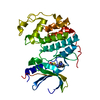
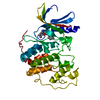
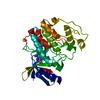
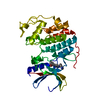
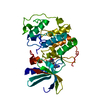
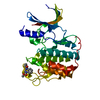
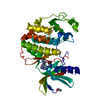
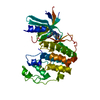

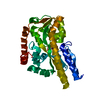
 PDBj
PDBj







